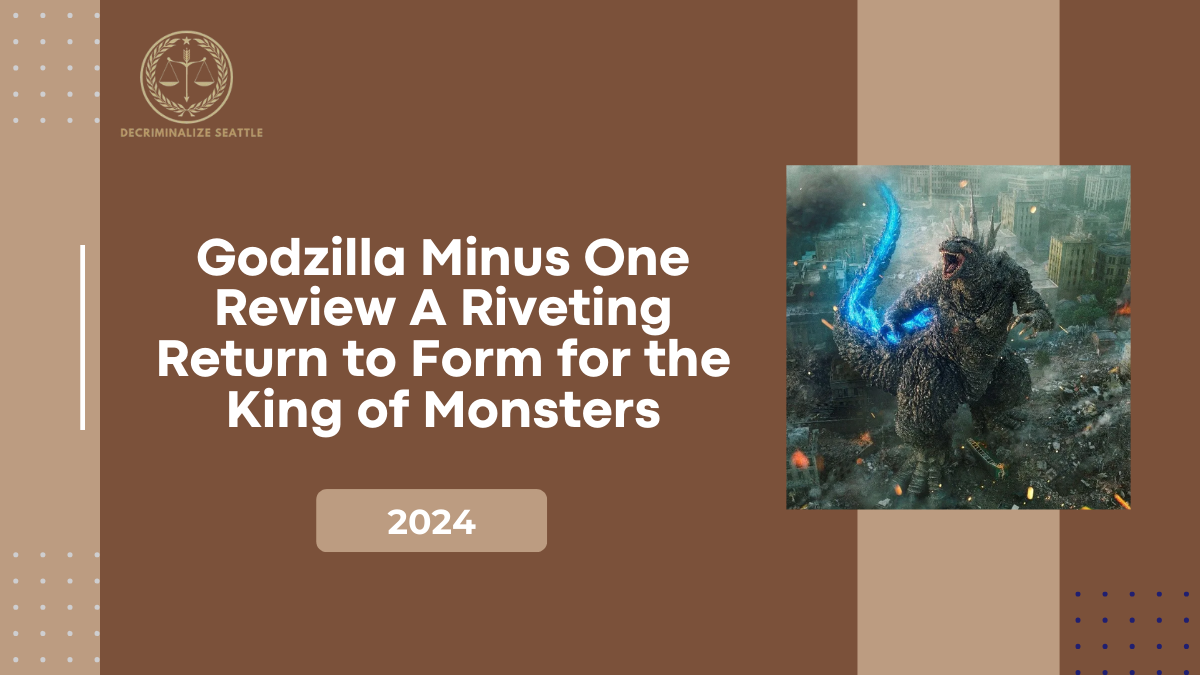The Godzilla franchise has evolved dramatically since its inception in 1954, delivering everything from terrifying horror to action-packed spectacles. The latest entry, Godzilla Minus One, brings audiences a thoughtful reimagining that blends horror, social commentary, and striking visuals. Directed by Takashi Yamazaki, this film takes a fresh approach by grounding the monster story in post-World War II Japan, offering a symbolic reflection on trauma, resilience, and survival. Here’s a closer look at what makes Godzilla Minus One a standout in the franchise.

A Powerful Setting and Historical Context
The film is set in Japan just after World War II, a period when the country was devastated economically, physically, and emotionally. Godzilla Minus One leverages this setting to amplify the movie’s central themes of destruction and rebirth. By situating Godzilla within a still-recovering Japan, the film taps into a raw vulnerability that previous Godzilla films have only briefly explored.
This narrative decision not only deepens the symbolic power of Godzilla but also roots the film in a palpable historical context. Here, Godzilla is more than a mere monster; he represents both the literal and metaphorical aftermath of nuclear devastation—a theme that resonates profoundly in Japan’s historical experience. The result is a film that is hauntingly reflective, conveying a sense of horror that feels both supernatural and achingly real.
Strong Character Development
Godzilla Minus One doesn’t just focus on Godzilla; it emphasizes the human stories affected by his wrath. The protagonist, Koji, is a broken man grappling with his past actions during the war. His journey of self-forgiveness and courage in the face of disaster resonates deeply. Unlike many Godzilla movies that feature more one-dimensional characters, Godzilla Minus One invests time in building its characters, making the stakes feel personal and the devastation more impactful.
Koji’s relationship with the people around him serves as a narrative backbone that adds emotional weight to the unfolding chaos. His interactions reflect a shared struggle among the Japanese people to move past trauma while dealing with the emergence of a new existential threat. The film doesn’t rely solely on its monster battles but instead finds an effective balance between character-driven storytelling and high-stakes action.
Visuals and Cinematography: A Dark and Brooding Aesthetic
Visually, Godzilla Minus One is impressive, offering a departure from the slick CGI-heavy productions of recent years. The film combines practical effects and CGI with remarkable attention to detail, presenting a Godzilla that feels simultaneously monstrous and awe-inspiring. The cinematography often captures the scale and terror of Godzilla through the lens of human characters, highlighting how small and powerless they feel in the creature’s wake.
Director Takashi Yamazaki uses shadows, darkness, and subdued colours to create a bleak, apocalyptic atmosphere that amplifies the film’s sense of dread. The visual tone is complemented by a haunting score that intensifies the suspense and accentuates the emotional weight of the narrative. Each frame is crafted to enhance the story, offering moments of silence and tension that let the audience feel the impact of Godzilla’s destruction.
A Return to Horror-Driven Roots
Unlike recent Godzilla movies that emphasize spectacle and action, Godzilla Minus One returns to the horror elements that defined the franchise’s origins. Godzilla here is portrayed as an unstoppable force of nature, embodying fear and unpredictability. The film’s pacing and tension reflect classic monster horror, building suspense and dread rather than relying on explosive battles.
This choice distinguishes Godzilla Minus One from many recent monster films, as it centres on terror rather than action. By doing so, the movie returns to the Godzilla franchise’s core identity as a reflection of societal fears. The film effectively taps into the horror of powerlessness, using Godzilla as a symbol of uncontrollable forces that mirror humanity’s own creations and destructiveness.
Conclusion
Godzilla Minus One is a triumph in storytelling, balancing social commentary, horror, and compelling human drama. It reminds audiences why Godzilla remains an enduring icon—serving as both a thrilling spectacle and a symbol of humanity’s darkest fears and strongest resilience. Takashi Yamazaki’s direction brings fresh life to a character that’s been interpreted countless times, offering a version of Godzilla that feels both timeless and deeply relevant. For fans of the franchise and newcomers alike, Godzilla Minus One is a cinematic experience that leaves a lasting impression, proving once again that the King of Monsters is here to stay.
Click here to know more.